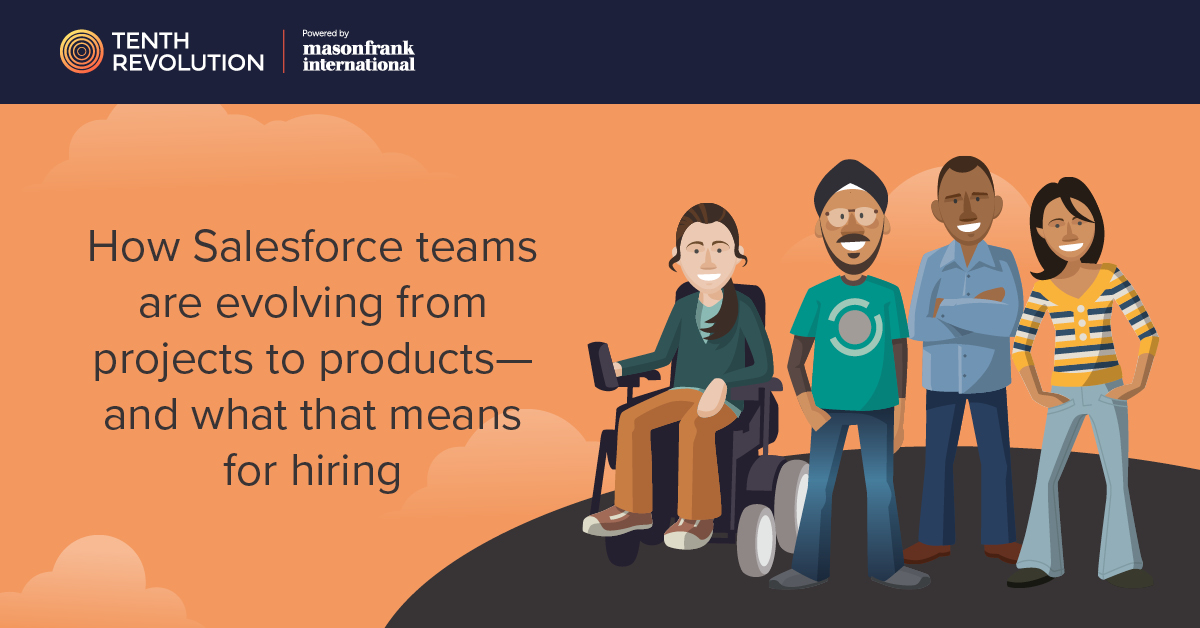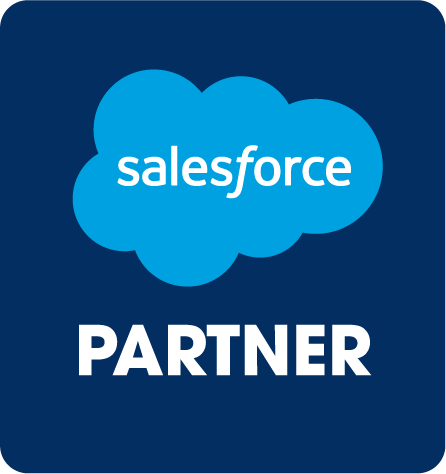
Salesforce teams are shifting to a product operating model that prioritizes long-term outcomes over one-off deliveries, creating new demand for Product Managers, Business Analysts, and Release leaders who can connect technology to business value.
For years, many Salesforce programs have run like traditional IT projects: scoped, delivered, and handed over. But as organizations expand their Salesforce estates and link CRM to every part of the customer journey, this approach has started to show its limits. Short-term project cycles often fail to account for continuous change, feature adoption, and evolving user needs.
A product operating model changes that. It treats Salesforce capabilities such as Sales Cloud, Service Cloud, and Experience Cloud as living products with roadmaps, backlogs, and defined owners. This approach aligns technology with measurable business outcomes and ensures CRM investment continues to evolve in step with strategy.
From project outputs to product outcomes
In a project model, success is often defined by delivery deadlines or scope completion. In a product model, success is measured by adoption, efficiency, and user satisfaction. This shift redefines how Salesforce teams organize and who they hire.
Key roles now include:
- CRM Product Managers, who guide the roadmap and ensure every feature drives business value
- Business Analysts, who connect user needs with technical delivery and measure post-release adoption
- Release and Change leaders, who manage delivery governance and ensure each release delivers measurable improvement
The technology is powerful, but success still depends on people. Mason Frank connects you with Salesforce professionals who can manage CRM products strategically, ensuring continuous improvement and measurable value.
The new Salesforce Product Manager
A Salesforce Product Manager combines product thinking with platform expertise. They define vision, set priorities, and maintain backlogs aligned to enterprise goals. Unlike traditional project managers, they are responsible for the lifecycle of features, including usage, performance, and iteration.
These professionals collaborate closely with Business Analysts and developers, using feedback from end users to refine experiences and boost adoption. Their ability to translate strategy into Salesforce capabilities keeps digital transformation grounded in business results rather than technical milestones.
Business Analysts as value translators
In a product model, Business Analysts play an expanded role. They go beyond gathering requirements to measuring how features perform after release. They analyze adoption metrics, process efficiency, and ROI, ensuring the roadmap remains tied to business outcomes.
Their work involves:
- Tracking user engagement and process efficiency
- Identifying pain points and opportunities for improvement
- Aligning feature enhancements with measurable KPIs
As Salesforce implementations become more modular with tools like DevOps Center, BAs act as the link between user insight and backlog prioritization. Their combination of analytical and strategic thinking makes them essential to the feedback loop that keeps CRM products evolving effectively.
Release and Change leaders as enablers of agility
Faster delivery cycles mean Salesforce teams need dedicated professionals to manage release governance and change enablement. These leaders oversee testing, documentation, and communication, ensuring every deployment is smooth, compliant, and understood across teams.
They also track:
- Feature adoption rates
- User training effectiveness
- Release quality and operational impact
In a product-led environment, this accountability builds trust between IT, business users, and leadership.
Mason Frank helps organizations find Salesforce professionals who can balance governance and agility, turning continuous delivery into continuous improvement.
Skills and structure for a product-led CRM team
A mature Salesforce product organization typically includes a cross-functional team for each major business capability. Each team is led by a Product Manager, supported by BAs, Architects, and Release leaders, and connected to shared services such as security, data, and DevOps.
These teams work in sprints, but their focus is not on project completion. It is on measurable progress, including:
- Faster quote-to-cash cycles
- Improved service resolution times
- Higher campaign conversion rates
- Increased user satisfaction
According to the Mason Frank Careers and Hiring Guide 2025, product-centric hiring is one of the fastest-growing trends across Salesforce teams, with strong demand for cross-functional talent that blends platform expertise and strategic management. This shift reflects a broader recognition that Salesforce is not a one-time build but a continuously evolving capability.
Why hiring strategies must evolve
For executives, the move from projects to products changes how success is achieved and who makes it happen. Leaders must now prioritize professionals who understand customer outcomes, long-term adoption, and iterative improvement.
Hiring for these skills requires a mindset shift. Instead of staffing temporary teams to deliver predefined scopes, businesses should build durable teams empowered to own, measure, and improve Salesforce products continuously.
This approach ensures:
- Better knowledge retention
- Faster innovation
- Stronger collaboration between IT and business functions
- Higher ROI from Salesforce investment
Building Salesforce teams for long-term success
As organizations mature their Salesforce strategies, a product operating model becomes the foundation for agility, accountability, and innovation. It encourages collaboration, data-driven decision-making, and shared ownership of business outcomes.
The right people make this model work—professionals who combine platform fluency with strategic vision, comfortable managing both roadmaps and relationships.
Adopting this approach helps businesses maximize return on their Salesforce investment and align technology to growth.

